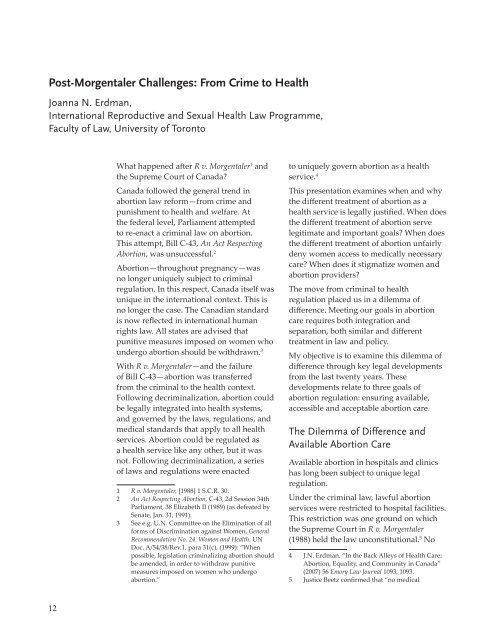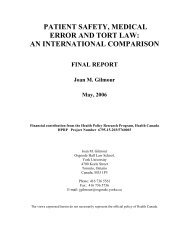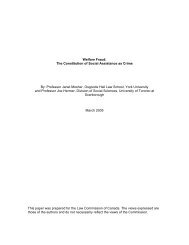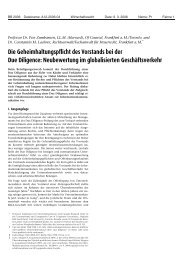Of What Difference? - National Abortion Federation
Of What Difference? - National Abortion Federation
Of What Difference? - National Abortion Federation
- No tags were found...
You also want an ePaper? Increase the reach of your titles
YUMPU automatically turns print PDFs into web optimized ePapers that Google loves.
Post-Morgentaler Challenges: From Crime to HealthJoanna N. Erdman,International Reproductive and Sexual Health Law Programme,Faculty of Law, University of Toronto<strong>What</strong> happened after R v. Morgentaler 1 andthe Supreme Court of Canada?Canada followed the general trend inabortion law reform—from crime andpunishment to health and welfare. Atthe federal level, Parliament attemptedto re-enact a criminal law on abortion.This attempt, Bill C-43, An Act Respecting<strong>Abortion</strong>, was unsuccessful. 2<strong>Abortion</strong>—throughout pregnancy—wasno longer uniquely subject to criminalregulation. In this respect, Canada itself wasunique in the international context. This isno longer the case. The Canadian standardis now reflected in international humanrights law. All states are advised thatpunitive measures imposed on women whoundergo abortion should be withdrawn. 3With R v. Morgentaler—and the failureof Bill C-43—abortion was transferredfrom the criminal to the health context.Following decriminalization, abortion couldbe legally integrated into health systems,and governed by the laws, regulations, andmedical standards that apply to all healthservices. <strong>Abortion</strong> could be regulated asa health service like any other, but it wasnot. Following decriminalization, a seriesof laws and regulations were enacted1 R v. Morgentaler, [1988] 1 S.C.R. 30.2 An Act Respecting <strong>Abortion</strong>, C-43, 2d Session 34thParliament, 38 Elizabeth II (1989) (as defeated bySenate, Jan. 31, 1991).3 See e.g. U.N. Committee on the Elimination of allforms of Discrimination against Women, GeneralRecommendation No. 24. Women and Health. UNDoc. A/54/38/Rev.1, para 31(c), (1999): “Whenpossible, legislation criminalizing abortion shouldbe amended, in order to withdraw punitivemeasures imposed on women who undergoabortion.”to uniquely govern abortion as a healthservice. 4This presentation examines when and whythe different treatment of abortion as ahealth service is legally justified. When doesthe different treatment of abortion servelegitimate and important goals? When doesthe different treatment of abortion unfairlydeny women access to medically necessarycare? When does it stigmatize women andabortion providers?The move from criminal to healthregulation placed us in a dilemma ofdifference. Meeting our goals in abortioncare requires both integration andseparation, both similar and differenttreatment in law and policy.My objective is to examine this dilemma ofdifference through key legal developmentsfrom the last twenty years. Thesedevelopments relate to three goals ofabortion regulation: ensuring available,accessible and acceptable abortion care.The Dilemma of <strong>Difference</strong> andAvailable <strong>Abortion</strong> CareAvailable abortion in hospitals and clinicshas long been subject to unique legalregulation.Under the criminal law, lawful abortionservices were restricted to hospital facilities.This restriction was one ground on whichthe Supreme Court in R v. Morgentaler(1988) held the law unconstitutional. 5 No4 J.N. Erdman. “In the Back Alleys of Health Care:<strong>Abortion</strong>, Equality, and Community in Canada”(2007) 56 Emory Law Journal 1093, 1093.5 Justice Beetz confirmed that “no medical12









